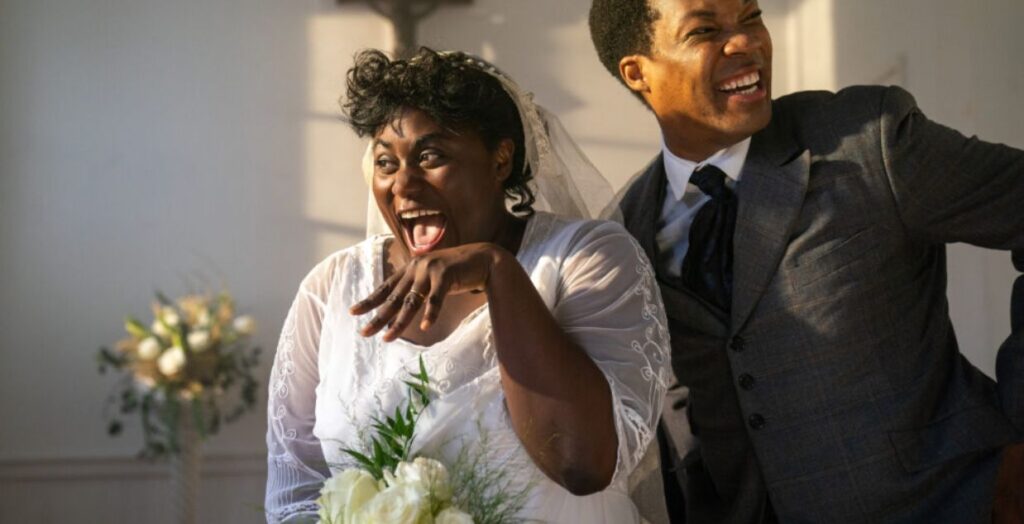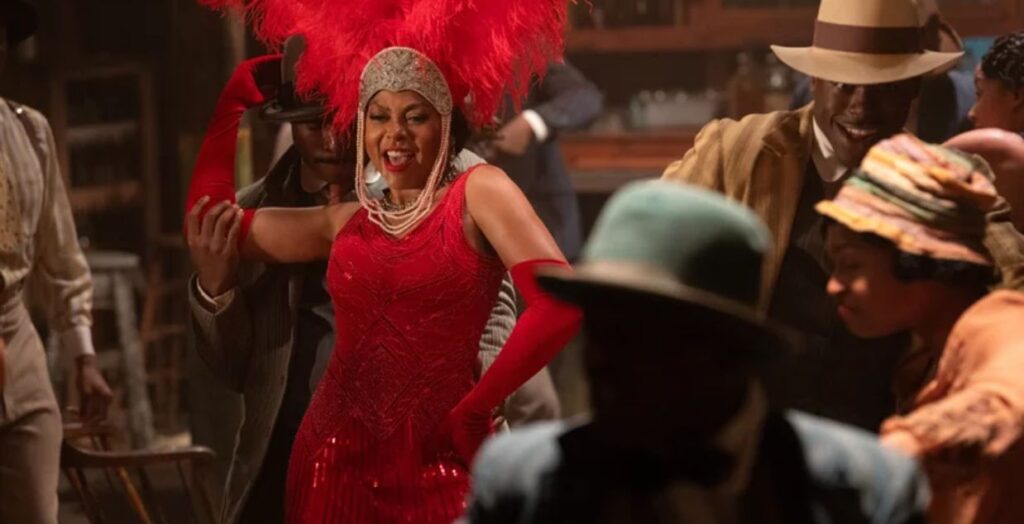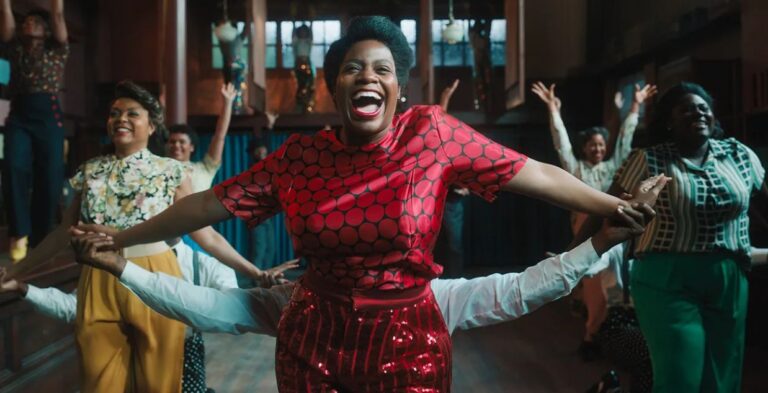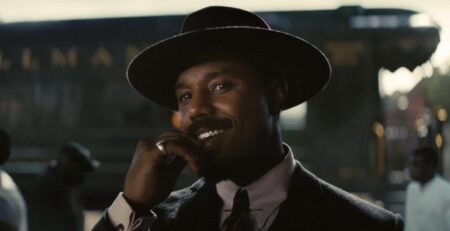The Color Purple (2024) is an important pillar of literature, film, and, most recently, Broadway. An epic story of love, resiliency, and self-realization, the latest take on Alice Walker’s Pulitzer prize and National Book Award-winning novel of the same name, The Color Purple, is directed by Blitz Bazawule with a screenplay by Marcus Gardley. Producers Oprah Winfrey, Steven Spielberg, Scott Sanders, and Quincy Jones—a story of Black women in rural Georgia overcoming and standing tall in the face of abuse. This film’s bravery is unmatched, thanks to actresses Fantasia Barrino, Taraji P. Henson, Danielle Brooks, and Halle Bailey. The film also features Colman Domingo as Mister and Corey Hawkins as Harpo.
Going into The Color Purple (2024), it should be known that it is more based on the novel and the Tony-winning Broadway stage show by Marsha Norman than the Spielberg film. But to call it an adaptation is a disservice to the strength of this reimagining and the way it has created a unique foothold in cinematic canon. In the film, we follow Celie’s life as a teen into adulthood. A child in an abusive family, she endured unrelenting hardships inflicted on her by the men who should have protected her. The film starts with Celie as a teen, and we see her children, who were born from abuse, are taken from her. They were the only light for her after living through abuse from the man she considered her father.
But Celie’s joy comes from her relationship with her sister Nettie. Nettie’s ability to tell stories kept Celie whole and showed her to dream of a life beyond what she could see. But when Celie is essentially sold into an abusive marriage in order to save Nettie’s future, the two sisters are pulled apart. Whether it’s the oppression she experiences from society or the ruthless hold her father and then Mister had on her, Celie finds a way to live and never loses sight of rejoining Nettie.
There is not a single actor in The Color Purple that isn’t firing on all cylinders. Each woman pushes themselves emotionally in their roles; their songs move you to your feet or bring you to your knees, and each and every one of them captures the spotlight with beauty and elegance, regardless of their role. They embody a spectrum of femininity and resiliency that speak to different experiences. No two women are alike, and that makes each of them stand out in their power and beauty. Add in a stellar performance from Colman Domingo as Mister, demonstrating his ability to turn himself from a beloved actor into a hated character with ease, and The Color Purple is an acting powerhouse in cinema.

As Sofia, Danielle Brooks is electric. She is purposeful and driven, and her sense of self cannot be destroyed by anyone even though they try over and over. From emotional moments that bring heartbreak to humorous ones that capture the resilience of Sofia as a character, Brooks is a revelation on screen. The depth of her voice and her ability to capture the passion that comes with self-confidence that Sofia embodies come through in every single moment she sings. She is commanding.
Then there is Taraji P. Henson as Shug Avery, an icon and jazz singer. Gorgeous beyond belief and a lightning bolt to the film when she arrives, her empathy, dedication, and love are a grounding force in the narrative and in Celie’s life. Her command of scenes opposite Domingo’s Mister is especially revealing of her strength as an actress and of her character as well. Misunderstood and underestimated because of her beauty, Shug’s intelligence, both emotionally and otherwise, is powerful to watch.
I would be remiss not to mention the talent of Halle Bailey and Phylicia Pearl Mpasi as a young Nettie and young Celie, and Ciara as an adult Nettie. Each brings their own unique energy and take to their characters and wonderfully threads together when playing the same character at different ages. There are truly no weak links in the performances in this film, whether through song or through spoken monologues. Everyone deserves ample praise.
With all of that said, The Color Purple (2024) is nothing without Celie, and Fantasia Barino delivers one of the most daring and profound performances of the year. She plays Celie with a tenderness and vulnerability that you watch shift into power as she begins to find her voice and herself through trauma after trauma. Barino carries the weight of Celia’s trauma, but she also carries her hope, which is fantastically captured in song as the cinematography switches from a period piece drama into a vibrant and effervescent color palette. Barino is an actress who understands the complexity of song and emotion and that is why Celie is a triumph on screen. She is singing with her entire soul, and in the moments where her song and strength have been stolen, she delivers a rousing and unyielding performance as well. It’s apparent that Barino brought Celie to the stage before the screen. This role is hers.

The inspiration from Alice Walker’s original novel is clear, but director Blitz Bazawule’s creativity and vision come through so strongly that it creates its own space. What the film does beautifully is offer the audience a clear and vibrant view of Celie’s imagination. The music and the costumes all show the audience how Celie maintains beauty in a dark world that has hurt her time and time again. Her imagination sees something out farther—something beautiful—and you can see how it keeps her going.
She invests that hope in others throughout the film, and when it is returned with love from Shug and Sofia, it especially makes your eyes swell with tears. As we see Nettie’s series of letters brought to life, the film never falls too far into despair, choosing rather to hold onto the hope outside of circumstance in a way that captures why The Color Purple has been and remains a powerful cultural touchstone of modern American literature.
Finally, The Color Purple embraces queerness in a tender and beautiful way. There are very few stories showcasing queer Black women on the big screen. That said, the film could still have done more to highlight Shug and Celie’s relationship and, more specifically, their intimacy. Black queer women deserve to not only be seen on screen but to be accepted and protected. Being represented on film is one step, and here, by relegating their romance to one song sung in Celie’s imagination, Bazawule and Gardley do a disservice to the power that element brings to the narrative. Even with a kiss on screen and sharing a bed, so much is left on the audience’s ability to infer. Shug’s almost cold departure, leaving Celie with a man that she knows beats her, is hard to watch.

Companionship and love, sisterhood and family, all hold the women of the film together, but it’s the way that Shug and Celie lean on each other that we see the latter’s self-discovery come to fruition. This happens because she is given the grace to do so. She is given the space to love herself and to find herself through Shug, but had the film not shied away from codifying their intimacy on screen, going beyond just “What is Love?” but truly seeing their relationship as it is, it could have been revelatory. Romantic love is as transformative as sisterly love, and while we as viewers can read into songs and tender moments, queer viewers deserve to see the beauty of Celie and Shug on screen.
With that stumble, the screenplay may not show the depth of love that Celie receives from the women around her. But, it does show the importance of it. Men have always cast Celie out and down, but Shug and Sofia love her. This is a spirit-affirming journey, and it comes from the strength of other women loving women in every way they can, even if we’re left to infer it. Ultimately, the takeaway is sisterhood and how they all come together. The Color Purple is a story of resiliency, and watching Black women’s pain comes with that. That said, the film is keen to hold onto joy wherever it can, and that pays off.
The Color Purple (2024) is vibrant, whimsical, and resilient, proving why stories can and should continue with new generations, bringing them to life in ways that resonate with them. A musical, a drama, and a story about the different shapes a family can take, The Color Purple is astounding.
The Color Purple (2024) is available now on MAX (formerly HBO MAX).
The Color Purple
-
Rating - 8.5/108.5/10
TL;DR
The Color Purple is vibrant, whimsical, and resilient, proving why stories can and should continue with new generations, bringing them to life in ways that resonate with them. A musical, a drama, and a story about the different shapes a family can take, The Color Purple is astounding.







